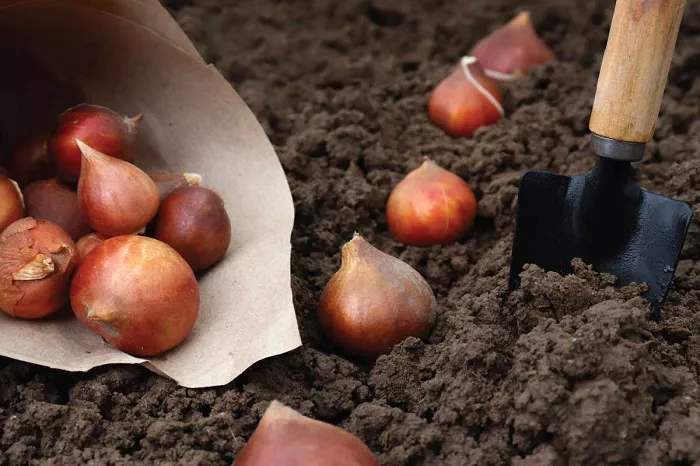As the seasons transition, garden enthusiasts often find themselves pondering the age-old question: Is it too late to plant tulips? The allure of these vibrant, cup-shaped flowers is undeniable, and their presence in any garden can transform an ordinary plot into a breathtaking display of springtime beauty. Tulips, with their rich history and diverse varieties, are a favorite among both novice and experienced gardeners. However, the timing of planting is crucial to ensure a successful bloom. In this article, we will delve into the optimal planting times, the factors that influence tulip growth, and practical tips to help you decide whether it is indeed too late to plant tulips.
Understanding the Tulip’s Natural Cycle
Tulips are native to regions with cold winters and warm summers, which has shaped their growth cycle. They are classified as bulbs that require a period of cold dormancy to trigger their growth. This dormancy period is essential for the tulip bulb to develop the necessary structures for flowering. In their natural habitat, tulips experience a cold winter, followed by a gradual warming in spring, which signals the bulbs to sprout and bloom.
Ideal Planting Time for Tulips
The ideal time to plant tulip bulbs is in the fall, typically between late September and early December, depending on your climate zone. This period allows the bulbs to establish strong root systems before the ground freezes. The cool soil temperatures during fall mimic the natural conditions tulips need to break dormancy. Planting in fall also ensures that the bulbs receive the required 12 to 14 weeks of cold temperatures, which is crucial for their spring bloom.
Factors Influencing Tulip Planting
Several factors can influence the success of tulip planting, and understanding these can help you make informed decisions.
Climate and Temperature
The climate in your region plays a significant role in determining the best time to plant tulips. In areas with mild winters, where the ground does not freeze, tulips may not receive the necessary cold period. In such cases, you can pre-chill the bulbs in the refrigerator for 8 to 10 weeks before planting. This artificial cold period helps to simulate the natural dormancy required for tulips to bloom.
Soil Conditions
Tulips thrive in well-drained soil. Poorly drained soil can lead to bulb rot, which is a common issue in wet or clay-heavy soils. Before planting, ensure that the soil is loose and amended with organic matter such as compost or peat moss. This will improve drainage and provide the bulbs with the nutrients they need to grow.
Bulb Quality
The quality of the bulbs you plant is another critical factor. Healthy bulbs are firm to the touch, with no signs of mold or damage. Avoid bulbs that are soft or have dark spots, as these may not produce healthy plants. Purchasing bulbs from reputable suppliers can help ensure you get high-quality bulbs that are more likely to thrive.
Practical Tips for Planting Tulips
When it comes to planting tulips, a few practical tips can make a significant difference in their growth and bloom.
Planting Depth and Spacing
Tulip bulbs should be planted at a depth of about 4 to 6 inches, with the pointed end facing up. This depth allows the bulbs to be protected from extreme temperatures and helps to anchor the plant as it grows. Space the bulbs about 4 to 6 inches apart to give each plant enough room to grow without competing for nutrients and sunlight.
Fertilization
While tulips do not require heavy fertilization, a light application of bulb fertilizer at planting time can provide the bulbs with the nutrients they need to establish strong root systems. Avoid using high-nitrogen fertilizers, as these can promote excessive leaf growth at the expense of flower production.
Mulching
Mulching around the planted bulbs can help to regulate soil temperature and retain moisture. A layer of organic mulch, such as shredded leaves or straw, can also help to suppress weeds and protect the bulbs from frost heaving.
Is It Too Late to Plant Tulips?
If you have missed the ideal fall planting window, all is not lost. Tulips are resilient plants, and with some adjustments, you can still enjoy their beauty in your garden. If you are planting in late winter or early spring, consider pre-chilling the bulbs for 8 to 10 weeks in the refrigerator. This will help to simulate the cold period they need to break dormancy.
Conclusion
In conclusion, while the ideal time to plant tulips is in the fall, it is never too late to bring the beauty of these flowers into your garden. By understanding the natural cycle of tulips and following practical planting tips, you can ensure a successful bloom. Whether you are planting in fall, winter, or spring, the key is to provide the bulbs with the conditions they need to thrive. So, go ahead and plant those tulips, and enjoy the vibrant display they will bring to your garden.


